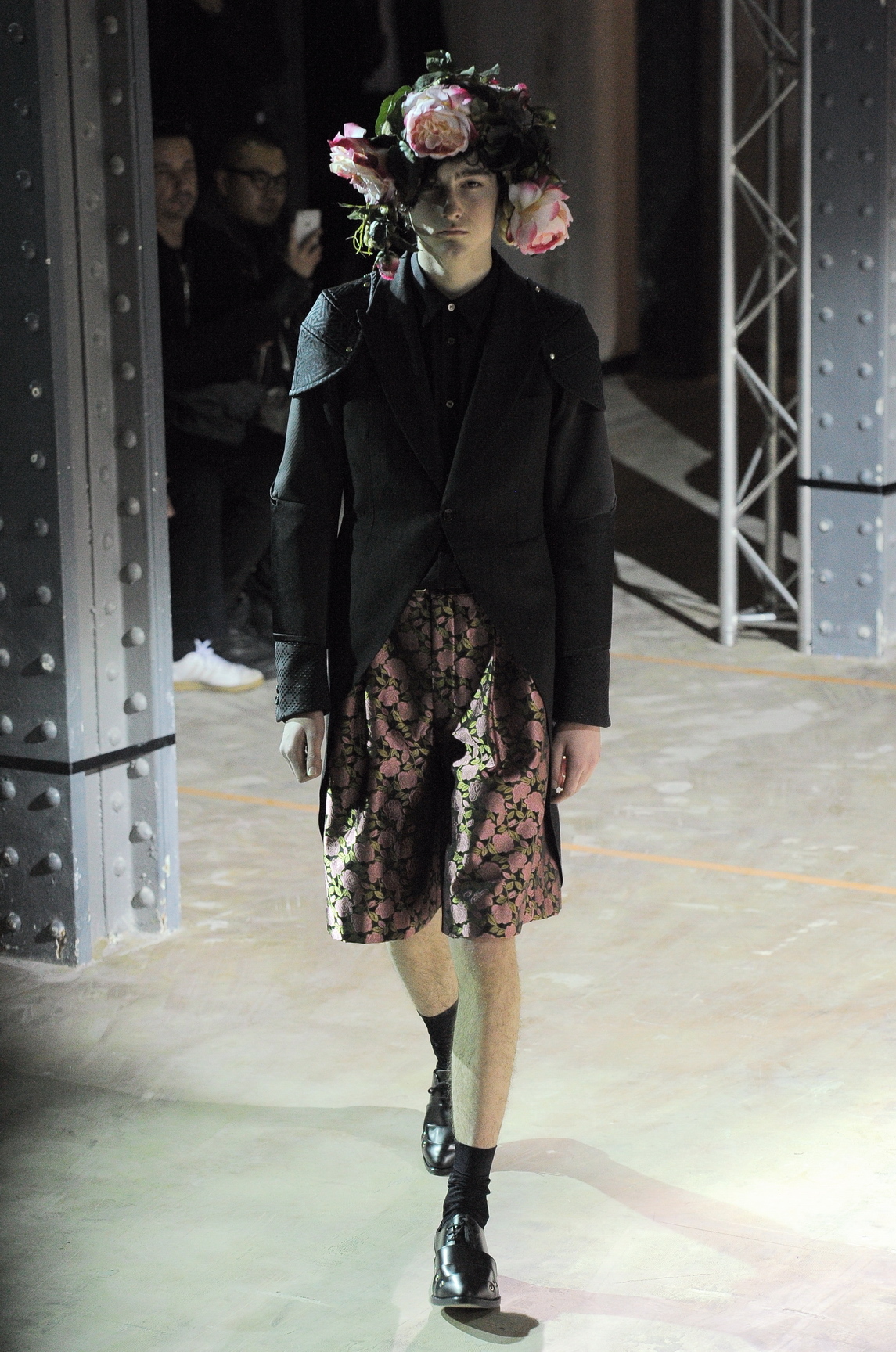It would take three days of men’s shows in Paris before the memory of what happened in this city on November 13th — just two months ago — would hit us all over again. Whenever we’ve entered a venue this week, guards with metal detectors have performed body scans on us, our bags have been checked thoroughly, and invitations came with reminders to have our passports with us at all times. This is the reality of a Paris recovering from terror, where the show must go on but change is inevitable. Rei Kawakubo’s work always reflects the state of our surroundings, sometimes in complex ways and at other times, in the uncomplicated poetry of a simple statement. Her Comme des Garçons Homme Plus show on Friday evening belonged to the latter. Young men with their hair swathed in multi-colored flowers wandered around a small podium in what Kawakubo called her “armor of peace”: tailoring constructed as medieval armor, its arm plates forged in floral fabrics—shoes replacing the overlapping metal plates of armor boots with leather plates.
It was an army of love, but not an unconditionally starry-eyed one. The way those boys walked around that small podium caged in by their audience, there was a sense of confusion to it. Trotting back and forth around the four sides of the stage, seemingly in no repetitive pattern, it was as if they were searching for a place to go, or perhaps a way out. As the collection drew to a close, garments became darker, now studded and more medieval, some in black leather. It represented the reality of things: a very human kind of optimism layered with the ever-present awareness that times aren’t rosy—even if you wear those roses on your sleeve. For the finale, models carrying huge bouquets of flowers paraded ceremoniously around the podium. This was an open Kawakubo at her best. The Japanese superstar designer and her husband and Comme des Garçons president Adrian Joffe have been spotted at the shows twice this week, attracting admiring stares from their hardcore fashion fans.
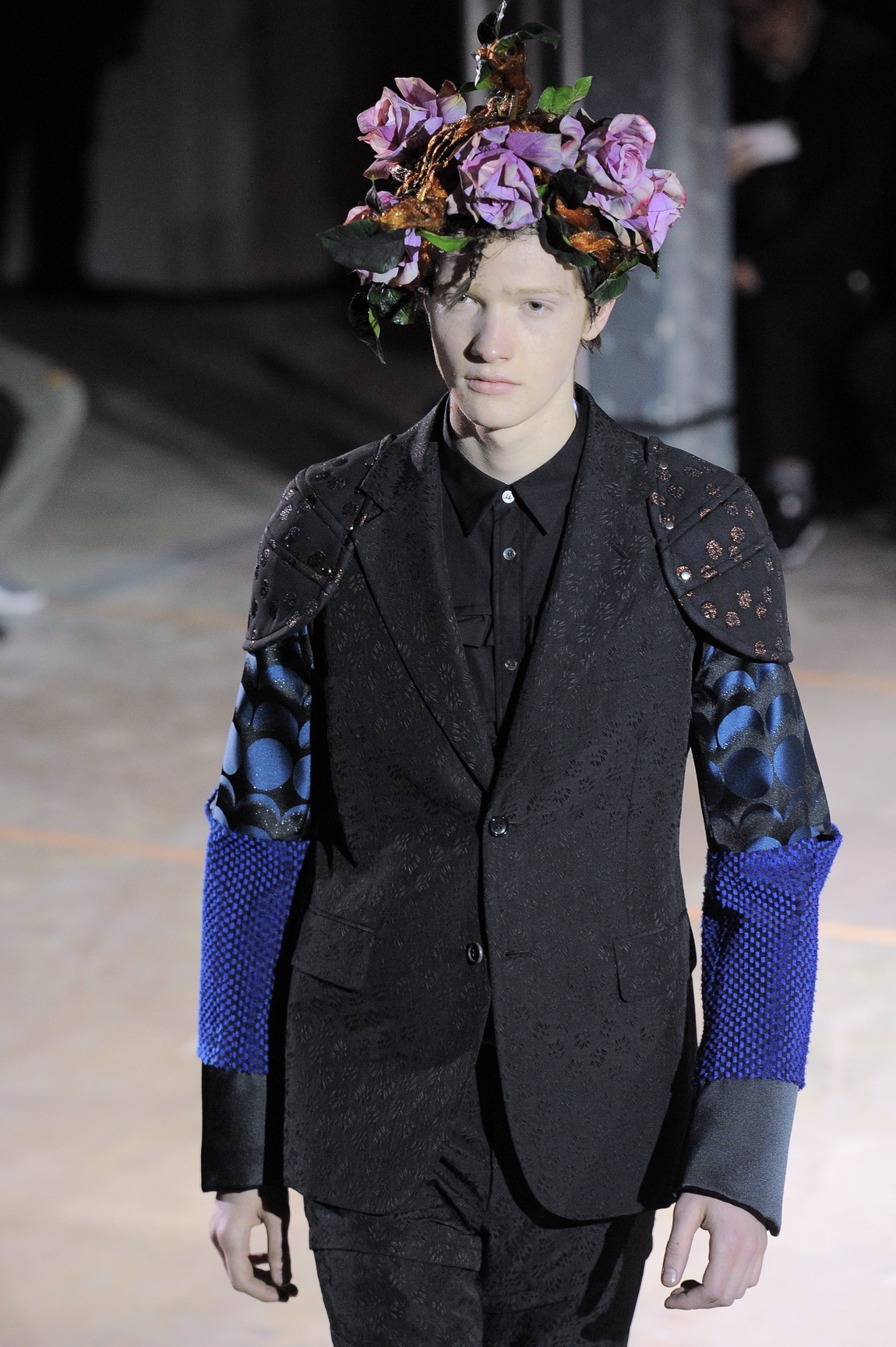
Kawakubo doesn’t make many public appearances, and for that reason you couldn’t help but read into her attendance at Walter Van Beirendonck — another one of fashion’s poets of peace — and Gosha Rubchinskiy, whose label is associated with the Paris branch of Comme des Garçons. Now is a time for designers to use their platforms the way Kawakubo has always done it, and she’s there to show the industry that she, for one, is watching and listening. Faced with terror and a migration level unmatched since World War II, Europe is going through major political changes—and it’s interesting it should happen at a time when designers are drawing on their European heritage seemingly more than ever. Brands such as Vetements and Rubchinskiy tackle the spirit of the Iron Curtain era when Europe was a question of West vs. East and celebrate the 90s that followed, when both the Wall and fashion went through a state of deconstruction.
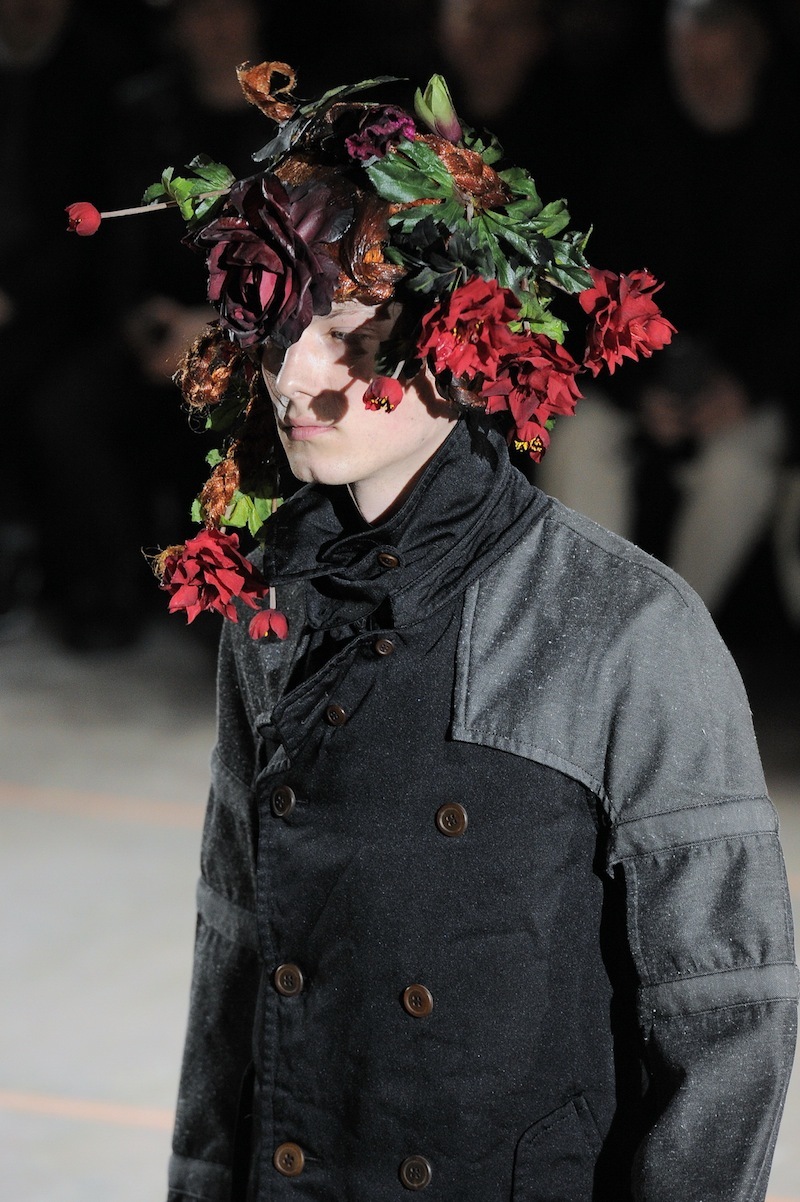
They look to Paris, to Berlin, to Moscow and beyond, and remember a time when things weren’t as accessible as they are now, and dress codes somehow meant more. On March 6, Vetements’ Demna Gvasalia will make his debut as creative director of Balenciaga for its women’s show, but on Friday the industry got a small glimpse into what to expect. The brand’s menswear presentation — model-free, by appointment only, “and no pictures, please” — contained a collection designed by the house’s team after the departure of former creative director Alexander Wang, but styled — in shots featured on a board in the showroom — by Gvasalia. It had all the nostalgia and subversion of his work for Vetements: gardening gloves dipped in black latex, an apron that would look equally at home in a butcher’s shop as in a gay sex club, and rails and rails of really amazing jackets and coats, which riffed on the volume-centric heritage of Balenciaga. That’s enough preview for now, though. Let the countdown begin.
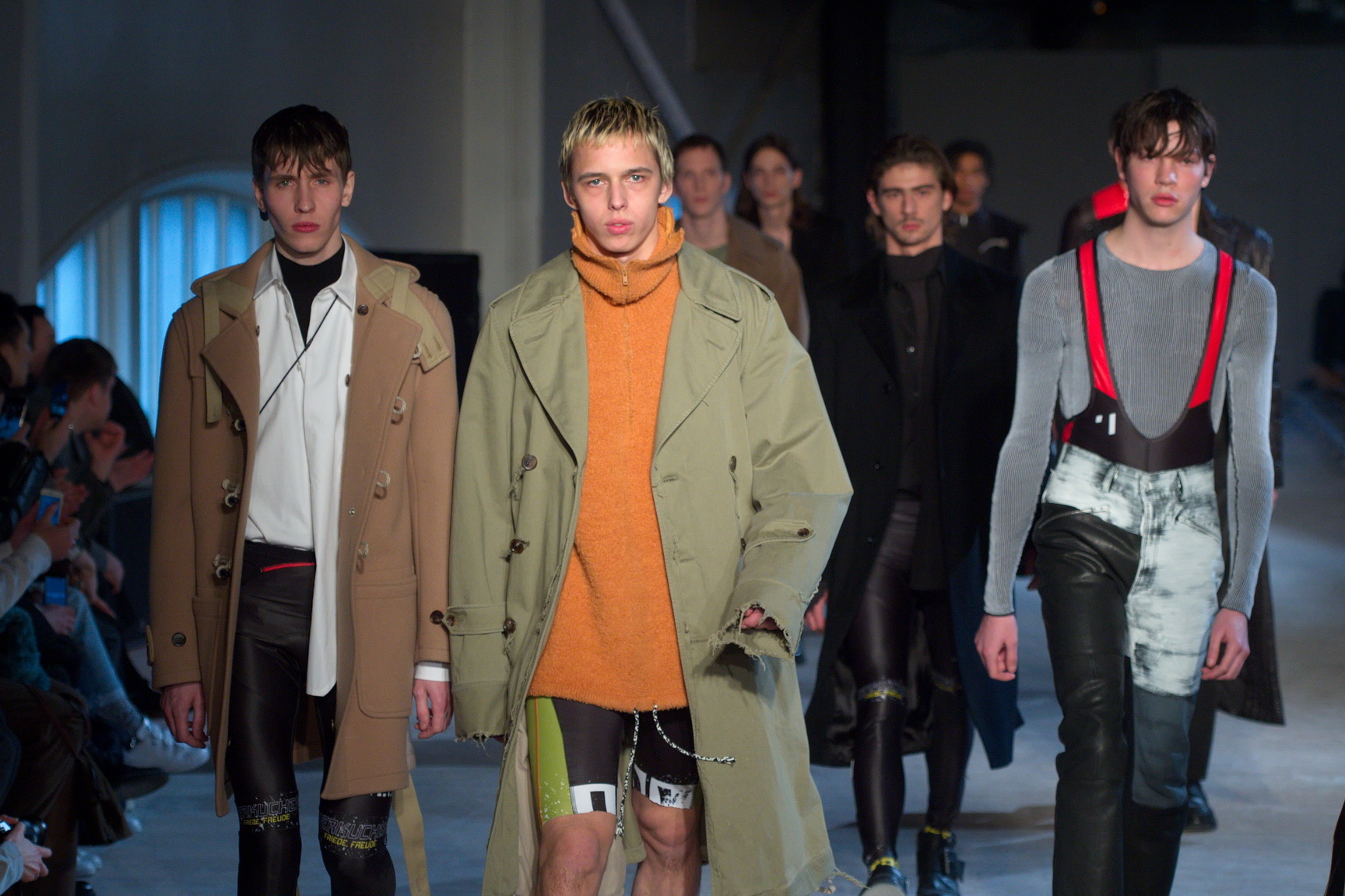
Vetements has made no secret of its devotion to Margiela — “when it was still MaisonMartin,” as Gvasalia quipped to i-D last year — but in just a few seasons its aesthetic has become such a powerful force in fashion that when you attend an actual Margiela show — now Maison John Galliano — you have to remind yourself that this is where it all began. Galliano didn’t design the menswear collection shown by Maison Margiela on Friday morning, even though its owner Renzo Russo recently said his star designer might assume menswear duties this year. Instead, it was designed by the excellent anonymous team behind the last couple of men’s collections for the brand, and this season was no less terrific. Evoking memories of 80s and 90s youth culture in Europe, it was an epic clash of cultures and scenes: ravey cycling garments, gothy long coats, grungy distressed knitwear, and deconstructed denim trousers with a certain amount of stonewashed nostalgia.
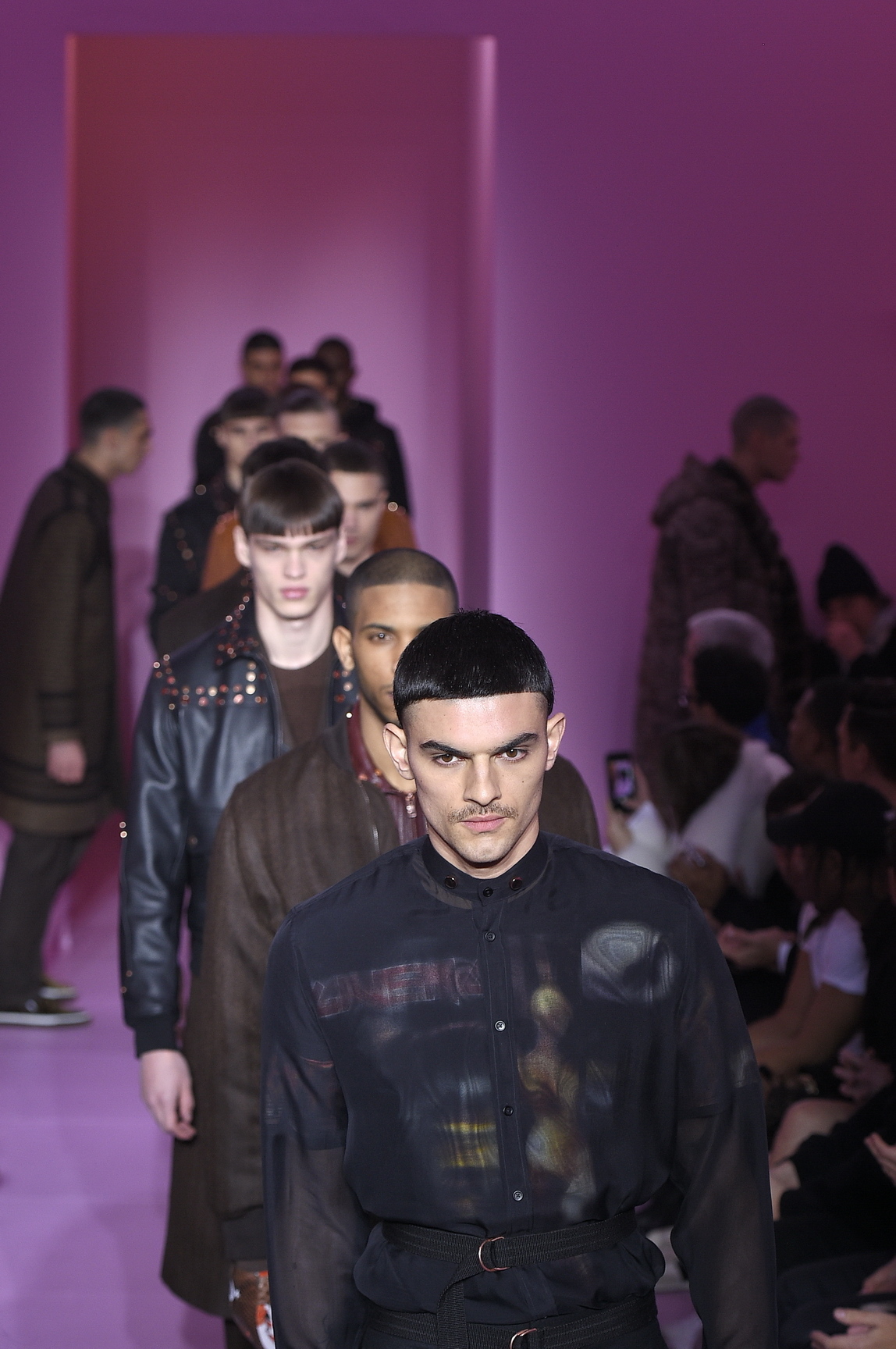
It reflected Paris right now, and its fashionable youth’s departure from bourgeois neatness in favor of what can only be described as a certain rawness—an eclectic underground look where metal band hoodies have replaced the ironed jeans and tailored puffa jackets once so loved by the citizens of Paris. It’s a look perhaps more associated with the youth of Berlin, which — after all — was once the epicenter of the divided Europe so on the horizon of designers at the moment. Even for Givenchy’s Riccardo Tisci, who had found inspiration for his urban prairie renegades for fall/winter 16 in Berlin. “I’ve been spending a lot of time in Berlin, and I like the youth of Berlin in the last few years. The young generation in Germany have this kind of way not only to wear black, but copper and brown so that was my new way of interpreting it,” he said of the collection’s color palette. He drew on the obsession of Berlin club kids with retro metal bands such as Metallica and Iron Maiden, and Givenchy-fied it. “I made my own way of rock. I’m not a real rock person,” Tisci confessed.
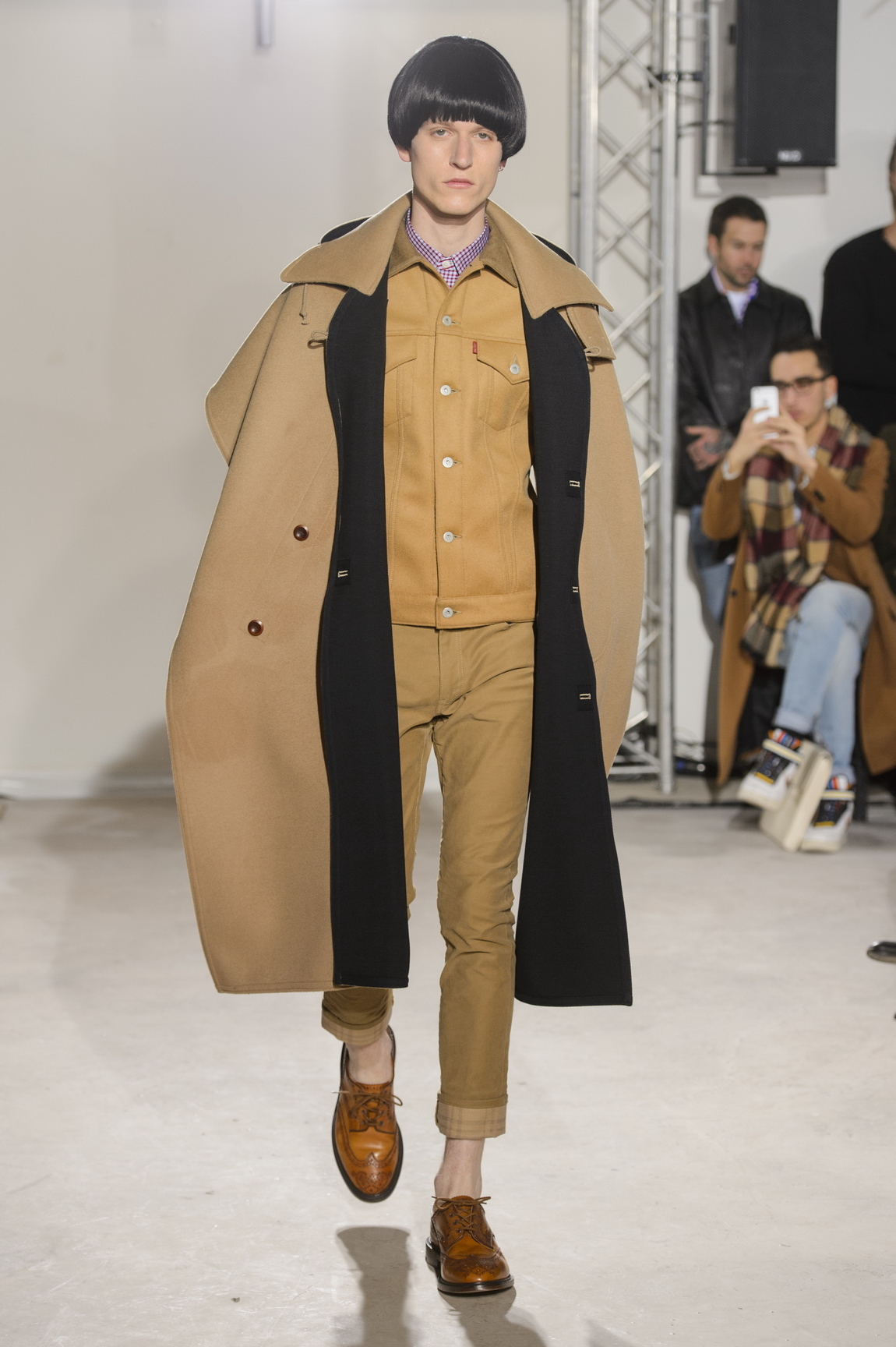
Shown in an all-bubblegum pink venue, the collection captured the spirit of Berlin’s clubbing culture. The toughness of studded café jackets and a leather coat, or an army green bomber whose print evoked military insignia, was contrasted with the saccharine pink of the surroundings, creating a kind of dirty club atmosphere—with high levels of Givenchy glamour, mind you. But desert influences, which Tisci explained came courtesy of Morocco, also brought in the ethnic eclecticism that exists all over the multi-cultural wonderland that is Europe. The Mod haircuts at Junya Watanabe took us back to another era on these parts, more specifically the music scene of 60s’ Britain, and fused — much in the vein of young people back then — the trademarks of British country side and city in an outdoorsy wardrobe that even came with solar panels attached to coats and jackets. The collection may have reflected on the past, but it definitely said: the future is here.
Credits
Text Anders Christian Madsen
Backstage Photography Jason Lloyd Evans
Catwalk Photography Mitchell Sams
